#roman artefact
Text

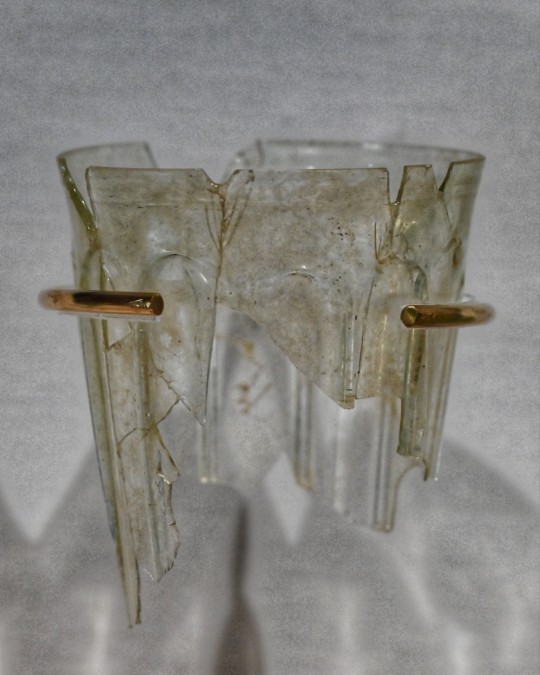
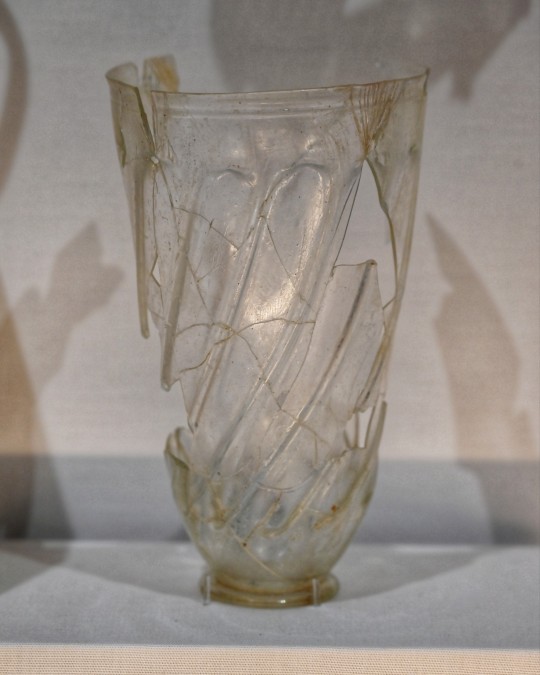

Roman Glassware from Wroxeter Roman City, Shrewsbury, Shropshire
#roman#roman army#roman living#roman glass#glassware#glass#roman craft#crockery#archaeology#roman empire#roman art#Wroxeter#roman artefact#ancient sites
174 notes
·
View notes
Text

Roman silver coin minted in 55 BCE, during Julius Caesar's campaigns in Gaul, by Publius Fonteius Capito, one of the tresviri monetales (mint officials) for that year. On the obverse, the helmeted head of the war god Mars, with a small representation of a tropaeum (trophy) behind him. On the reverse, a Roman horseman rides down two enemy soldiers, identified by their helmets and shields as Gauls.
#classics#tagamemnon#history#ancient history#Ancient Rome#Roman Republic#Roman history#art#art history#ancient art#Roman art#Ancient Roman art#Roman Republican art#artifacts#artefacts#coins#ancient coins#Roman coins#Ancient Roman coins#numismatics#ancient numismatics#Roman numismatics
105 notes
·
View notes
Text

Sea encrusted amphora necklace
#moon and serpent#amphora#amphorae#sea witch#ancient greek#ancient roman#archaeology#artefact#artifact#mermaidcore
575 notes
·
View notes
Text
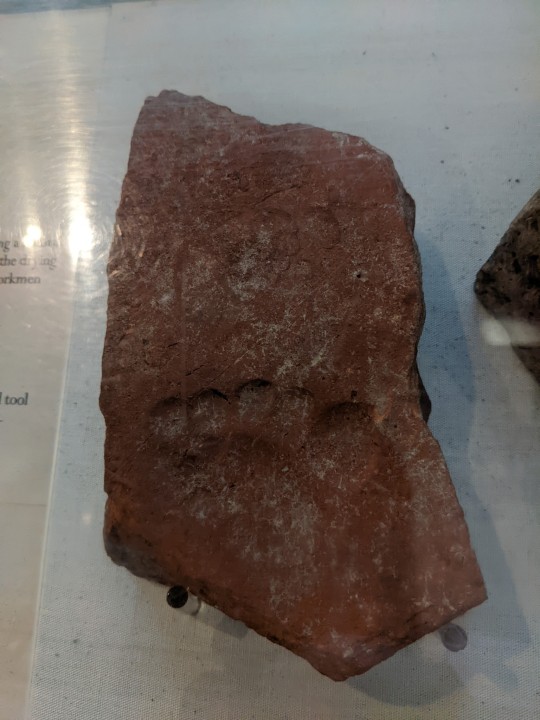
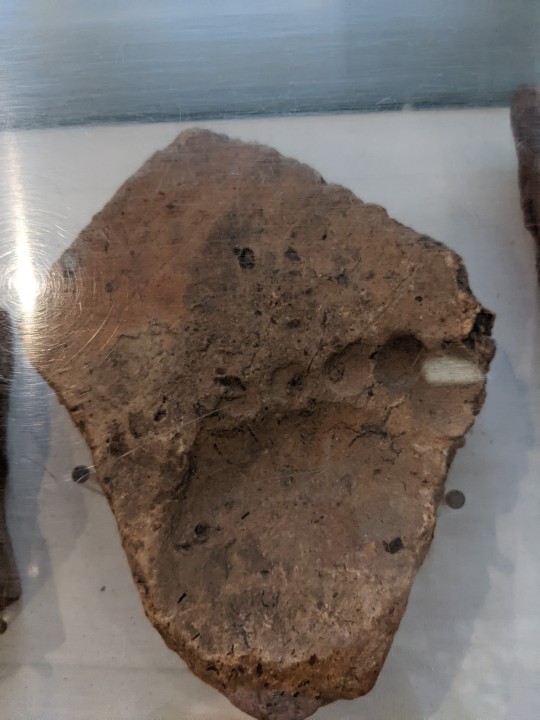


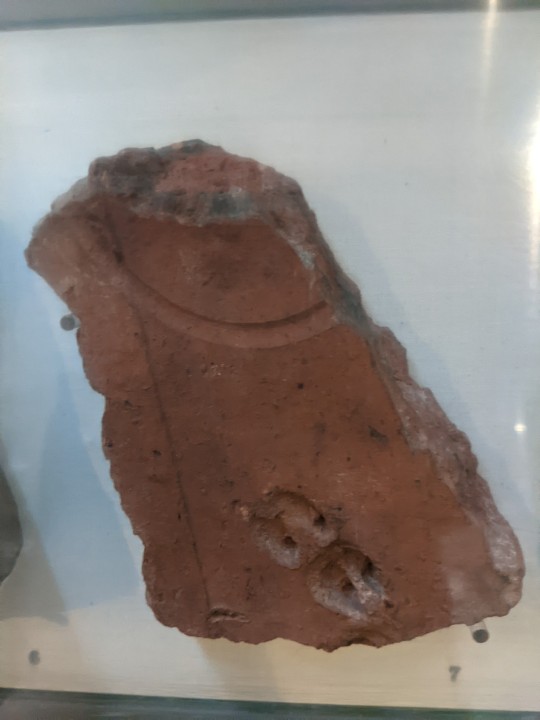



animal prints on roman tiles from calleva (modern day silchester)! feat.:
a young child
an adult
the hob-nailed sole of a shoe
a calf
a lamb or a kid
a chicken
a cat (?)
a dog
#more animal tiles!! roman ones this time#sorry for the bad photos the case was v reflective#but I love the amazing mix you get here#thoughts#tagamemnon#also i say it's from silchester bc that's where calleva os so that's where it was dug up#but the actual artefacts are in the reading museum
529 notes
·
View notes
Text

And every building is a sacred temple and/or a burial vault. 🙄
🤣
Wow. Not being a knitter, I never would have thought of that. I just thought they were some kind of game piece.
20 notes
·
View notes
Text
*casually wearing an authentic 2000 year old romano-british silver ring*

#archaeology#romans#roman#ring#antique#artefact#i bought it#crazy#i wonder who originally owned it#and who made it
59 notes
·
View notes
Photo

Sea monster decoration (3rd-4th century Rome)
Material: Bronze
Size: Height 6 Width 9.2cm
A sea monster with the upper body of a lion and the lower body of a fish. Since the back is flat, it is thought that they were paired and attached as a decoration to furnishings such as furniture or battle carriages. The appearance of riding the waves is similar to expressions such as the statue of Bodhisattva in the Clouds.
37 notes
·
View notes
Text
Roman mosaic depicting a bird

ITEM
Mosaic depicting a bird
MATERIAL
Tesserae
CULTURE
Roman
PERIOD
3rd Century A.D
DIMENSIONS
400 mm x 440 mm x 40 mm
CONDITION
Good condition
PROVENANCE
Ex Swiss private collection, E.O., Geneve, acquired before 1990s
Roman mosaics are renowned for their intricate designs and enduring beauty, often depicting various motifs that reflect the cultural and artistic sensibilities of the time. Among these motifs, the depiction of birds holds particular significance in Roman art. Birds were commonly featured in Roman mosaics for their symbolic meanings, which varied depending on the species portrayed. The birds motif in Roman mosaics served both decorative and symbolic purposes, enriching the visual appeal of the artwork while conveying deeper layers of meaning to the viewer.
In Roman art, birds were frequently associated with themes of freedom, transcendence, and divine communication. Depictions of birds such as doves, eagles, and peacocks symbolized different aspects of Roman society and belief systems. For example, doves were often associated with peace and love, while eagles were emblematic of power and authority, often representing the Roman state and its military prowess. Peacocks, with their vibrant plumage, were symbols of immortality and resurrection in Roman mythology, associated with deities such as Juno and Hera.
The
Read the full article
#ancient#ancientart#ancienthistory#artefact#artifact#ancientartifacts#antiquities#antiquity#art#artobject#ancientrome#ancientworld#history#classical#archaeology#roman#mosaic#bird#tessera#tesserae#animal
3 notes
·
View notes
Text
of the archaeological discoveries i've studied and seen, perhaps the one that had the biggest impact on me is that of crepereia tryphaena.





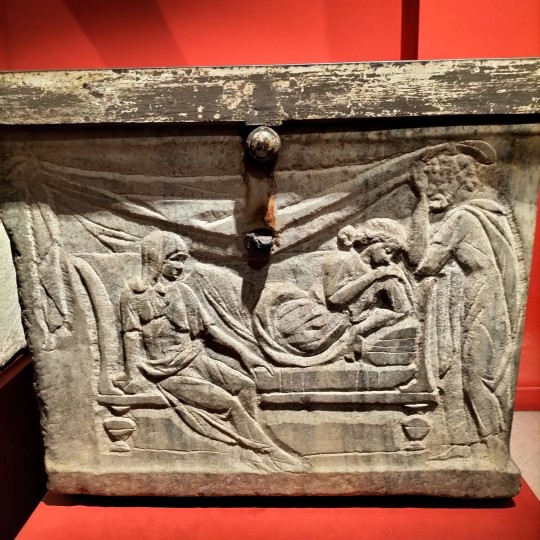
my pictures (you can literally see my reflection)
now displayed at centrale montemartini in rome, crepereia tryphaena was a young woman, of about 20 years old, whose sarcophagus was found during the excavation works started in 1889 for the foundations of the palace of justice and for the construction of the umberto I bridge over the tiber in rome. the sarcophagus, engraved with a scene alluding to the girl's death (last row of pictures on the right), was found with four more, all buried between the middle of the 2nd century and the 3rd AD. only two were still sealed: that of tryphaena and crepereius euhodus, buried at the bottom of a well later filled with earth, and placed side by side and decorated only on two sides, like in a double burial.
the funeral equipment, present only in the tryphaena sarcophagus, included many gold ornaments (the intact skeleton of the girl was still adorned with several jewels and a crown of myrtle leaves blocked by a barrette made with small silver flowers. at the time of her burial she wore gold and pearl pendant earrings and a gold necklace with pendants formed by small beryl crystals, and er tunica was held by a gold brooch adorned with an engraved amethyst bezel), and placed next to her skeleton there was an ivory doll with her own doll's kit, matching the jewels of tryphaena. the presence of the doll in the funeral outfit may suggest that she died on the eve of her wedding, not having had time to donate her toys to the gods in the "farewell to childhood" ceremony.
the panel at the museum reads:
Crepereia Tryphaena
On 10 May 1889, during the excavations for the construction of the Courthouse in the Prati district, an incredible discovery unearthed two sarcophagi placed next to each other, which held the remains of Crepereia Tryphaena and Creperio Euhodus.
The discovery aroused great excitement, as one of the sarcophagi contained the body of a girl, lovingly placed with her opulent trousseau and her ivory doll.
We do not know if Crepereia was a young bride or a girl who was soon to be married, but two of her rings, a carnelian signet ring with two clasped hands and another engraved with the name Filetus, immediately brought to mind a wedding ring and the name of her future husband.*
Crepereia belonged to a family of wealthy freedmen, or descendants of freedmen, originating from a Greek-speaking region, perhaps Egypt or Syria, as demonstrated by the names of the deceased. The extremely refined manufacture of the doll is probably that of artisans from the city of Alexandria in Egypt.
The burial area in the Gardens of Domizia, a property that passed into Imperial ownership during Nero's reign, leads us to believe that the Creperii were given the privilege of being buried here for their lead role in the administration of imperial property.
The burial can be dated back to the mid-second century AD, a chronology that is also confirmed by the doll's coiffure, realistically inspired by the Antonine hairstyles of the time, and in particular the trend introduced by Empressed Faustina the Elder and Faustina the Younger.
Even the doll had its own miniature trousseau; the objects were inside an elegant ivory and bone box, which was perhaps meant to be opened by the small key hanging from the ring in the doll's hand.
the trousseau and some details (pictures not mine):


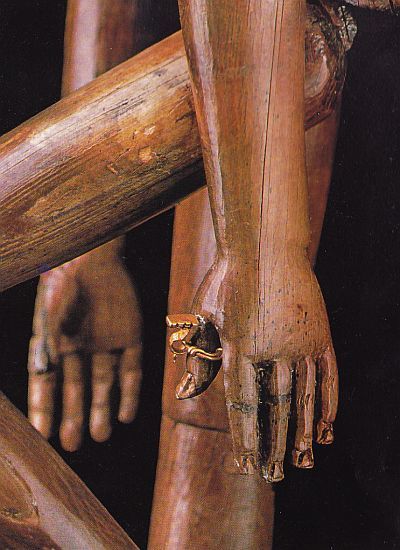
*because of this giovanni pascoli, italian poet, composed a poem in latin which he presented on the occasion of the wedding of the daughter of the honourable benzoni, minister of public education of the time

the water imagery comes from the opening of the sarcophagus itself, which was still sealed: the young woman, submerged in the water coming from the nearby tiber river, "appeared as a nymph". archaeologist rodolfo lanciani wrote:

both her skeleton and that of crepereius euhodus are still preserved inside the sarcophagi
#paiawon.txt#crepereia tryphaena#archaeoblr#archaeology#roman archaeology#archeological discovery#poetry#italian poetry#italian poet#giovanni pascoli#latin poetry#rome history#centrale montemartini#rome museum#art history#artblr#studyblr#artefacts#antiquities#antiquity#classical antiquity
5 notes
·
View notes
Text
#ancient rome#roman#history#artifacts#archaeology#roman dodecahedron#england#europe#what are these things?#smithsonian magazine#artefacts#metalwork#metalworking
2 notes
·
View notes
Photo
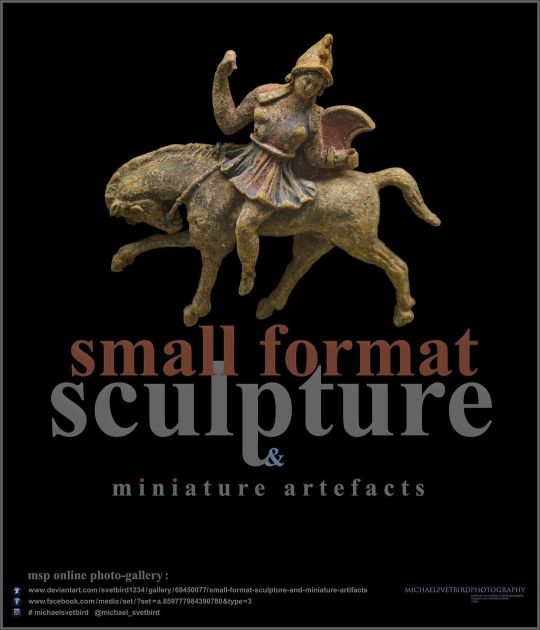
: • "Mythology-inspired Small Format Sculpture & Miniature Artefacts" MSP Online Photo-gallery | 2019 - ... . • D-ART: https://www.deviantart.com/svetbird1234/gallery/69450077/small-format-sculpture-and-miniature-artifacts . • FB | Album: https://www.facebook.com/media/set/?set=a.859777984390780&type=3 . . #sculpture #smallformatsculpture #ancientsculpture #miniatureart #showpiece #ancientart #arthistory #artefact #artifact #mythology #greek #etruscan #roman #apulian #magnagrecia #archaeology #archaeologyart #antiquity #classical #museology #museums #archaeologymuseum #ancientcultures #heritage #gallery #online #sculpturephotography #museumphotography #archaeologyphotography #michaelsvetbird @michael_sverbird ©msp online gallery (at Milan, Italy) https://www.instagram.com/p/CjPxYORIwgr/?igshid=NGJjMDIxMWI=
#sculpture#smallformatsculpture#ancientsculpture#miniatureart#showpiece#ancientart#arthistory#artefact#artifact#mythology#greek#etruscan#roman#apulian#magnagrecia#archaeology#archaeologyart#antiquity#classical#museology#museums#archaeologymuseum#ancientcultures#heritage#gallery#online#sculpturephotography#museumphotography#archaeologyphotography#michaelsvetbird
33 notes
·
View notes
Text
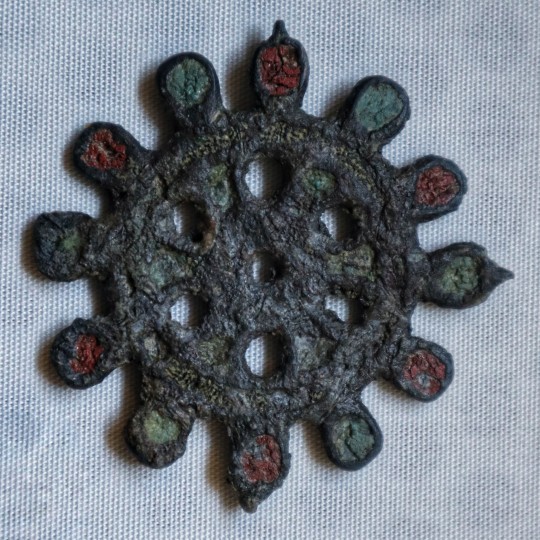

Roman Metalwork Fragments, Roman Aldborough, Yorkshire
#roman#roman style#roman artefact#romans#roman army#roman town#roman metalwork#roman empire#roman living#roman britain#ancient living#ancient culture#ancient craft
52 notes
·
View notes
Text

Coin from Heliopolis (Baalbek) in present-day Lebanon, minted under the Roman emperor Philip the Arab (r. 244-249 CE). On the obverse, the laureate bust of Philip. On the reverse, the personified Tyche (Fortune) of Heliopolis, accompanied by two spirits holding torches. On either side, female statues atop columns hold a canopy over Tyche's head. Now in the Munzkabinett Berlin.
#classics#tagamemnon#history#ancient history#Roman Empire#Roman history#Heliopolis#Baalbek#art#art history#ancient art#Greek religion#Ancient Greek religion#Hellenic polytheism#coins#ancient coins#Roman coins#Ancient Roman coins#numismatics#ancient numismatics#Roman numismatics#artifacts#artefacts#Munzkabinett Berlin
71 notes
·
View notes
Text
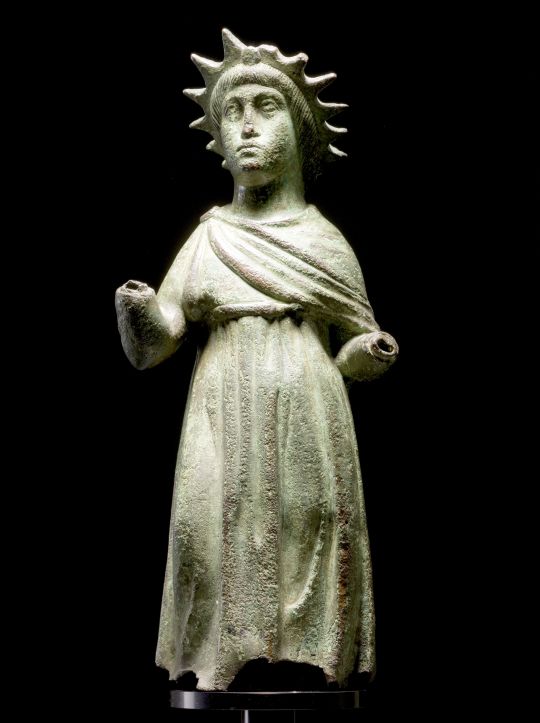
Statue of Liberty?
Actually no, it's the statuette from Tømmerby in Denmark…
This bronze cast figure is about 50 cm tall and was likely made in the 300s AD in the Roman Empire. It is thought to represent Constantine the Great, Theodosius I, or Arcadius (son of Theodosius I) whom were all emperors of the Roman Empire at some point.
The beams emitting from his head allude to the emperor as a sun god, which was a powerful image for Christians, Roman heathens and Norse alike.
Object 8040 in Nationalmuseet: Danmarks Oldtid collection. Photographed by Roberto Fortuna and Kira Ursem.
More pics below
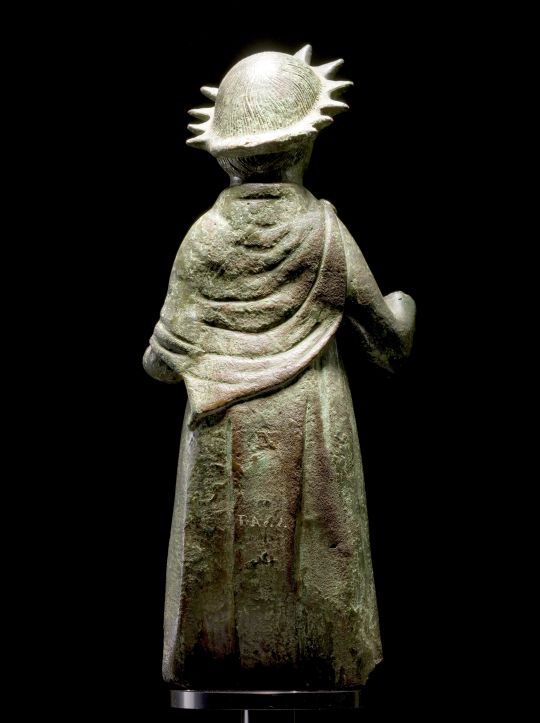


Info about the statue in Danish
#statue of liberty#archaeology#iron age#viking age#roman empire#ancient rome#roman emperor#emperor#denmark#statue#statuette#figurine#ancient history#artefact#sun god
32 notes
·
View notes
Text
What Tragic Horror Character Trope Are You ?
THAT WHICH CANNOT BE KNOWN
Oh god. How did it come to this? To some extent, you've gone so far past your own idea of "human" that it must be kind of fun, right? Maybe. I'm not sure. As an artefact of cosmic horror, you're wild and wacky and colourful and people are probably drawn to that, but you will never let them know you. The mystery intrigues for a while, but it'll wear everyone down. It'll wear you down, too. Who are you? Do you remember? Are you so far gone that you can't go back? And maybe that's the most tragic thing of all- becoming so distorted in your identity, and for so long, that no matter how hard you want to return you can't ever seem to figure it out. But you've learned a vast amount up in the stars, and people will work hard to get to know you. It doesn't matter who you used to be. Sometimes, you should just start from scratch: give yourself a name, a birthday. Let someone celebrate these things with you.
TAGGED BY. @arkhampsychiatrist (Thank you Ciar! ♡)
TAGGING. Whoever would like to do it?
#( 💀 ♮ DASHBOARD DECEPTION ♮ | memes )#This was a fun quiz to do#I'm not sure how wacky and colourful Roman is exactly but everything else is bang on#Artefact of cosmic horror#He wouldn't be entirely mad about that haha#The identity stuff and it not mattering who he used to be though yesssss#He did that in the end#Starting from scratch and remaking himself into the man he was meant to be
5 notes
·
View notes
Text
L'Anneau d'Odin

Un jour, un livre aux Éditions Kelach.
L'Anneau d'Odin
Frissons - Aventures - Démons
Avide de pouvoir, le démon Ravana recrute Wilhem, homme aigri et complexé, pour retrouver le sceptre de Râ, un artefact magique qui lui redonnera sa puissance d’antan. Mais c’est sans compter sur Râ, le dieu égyptien à tête de faucon, qui missionne l’érudit Franz Meyer pour contrecarrer les plans du démon ! Accompagné de son neveu, Franz ira jusqu’au bout du réel et bien au-delà. Ses efforts, mis à mal par le disciple de Ravana, seront-ils suffisants ?
De Francfort au Caire, entre magie, énigmes, course-poursuite, amour et frissons, plongez-vous dans cette quête pleine d’aventures aux côtés de Franz et ses compagnons !
#éditions kelach#frayeur#roman#démons#aventurier#périple#divinités#artefact#sorcellerie#trilogie#odin
0 notes